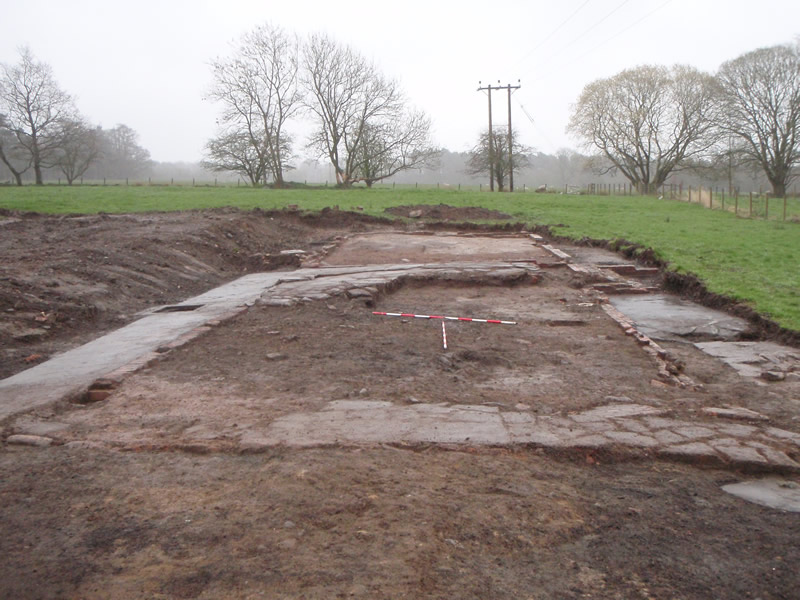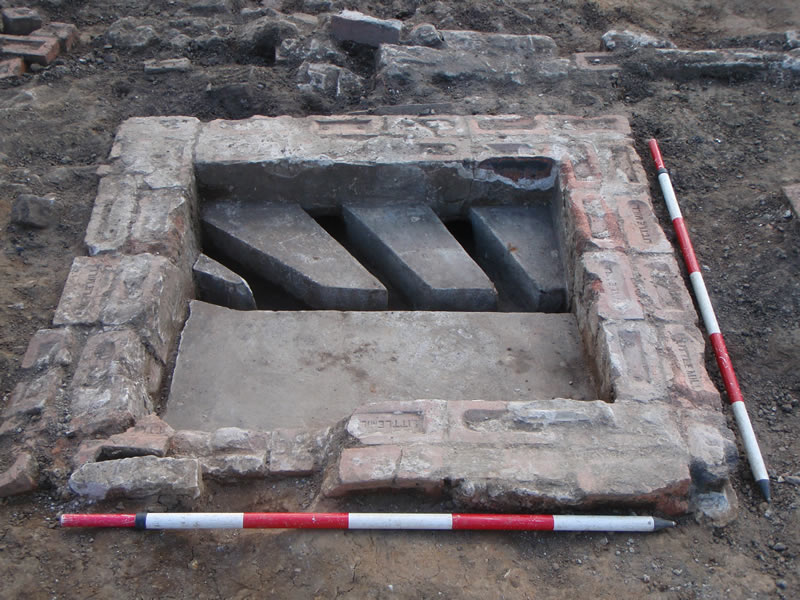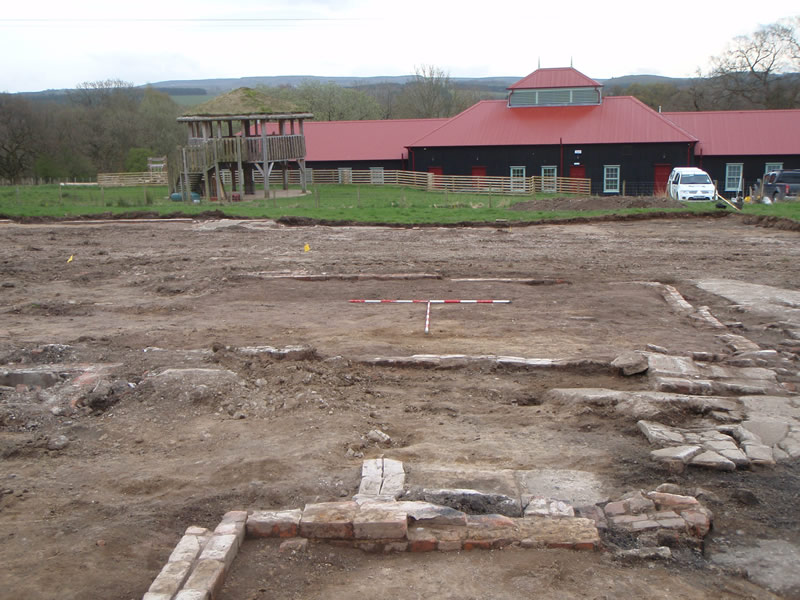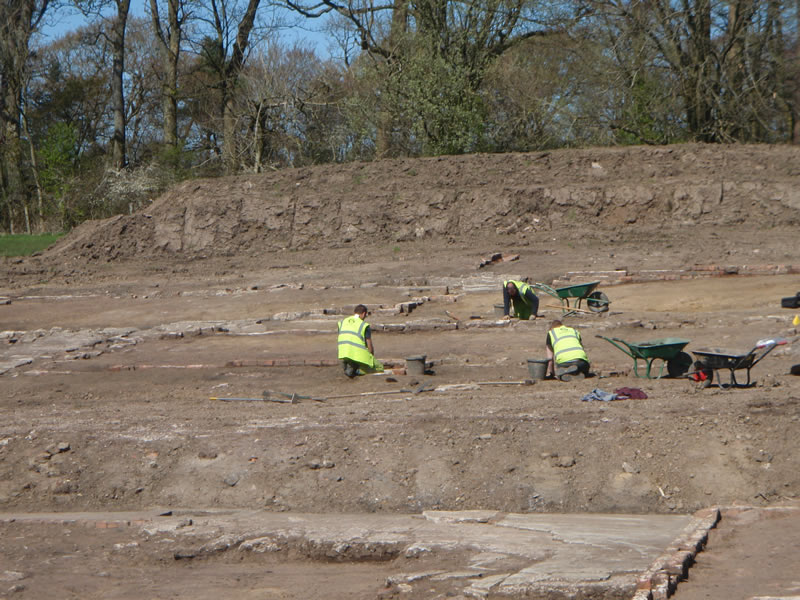A team from GUARD Archaeology, led by Christine Rennie, recently carried out a watching brief during the removal of topsoil and overburden over the known remains of a Prisoner of War camp within the policies of Dumfries House in East Ayrshire. The camp, variously known as Camp 22, Temple Camp, Auchinleck Camp and Pennylands Camp, was built in about 1942 as a training camp for the Tank Corps, but was also used as a transit camp for other allied regiments. Between 1943 and 1944, the camp was Prisoner of War camp 22, housing German and Italian POWs. In 1947, the camp again changed use, becoming a repatriation centre for Polish soldiers.
The fieldwork revealed the remains of six brick and concrete buildings, nine drain junction boxes, five concrete paths and a road. These were in varying states of preservation, with Structure B at the south of the Site being the only building where any floor levels remained intact. A series of 24 concrete-surrounded postholes on the north side of the road almost certainly relate to what would have been a fairly substantial fence dating to the POW camp phase of use.
It was not possible to identify the functions of most of the excavated structures, although features and artefacts found in Structure B suggest that this was probably a latrine and shower room. Some of the artefacts retrieved from the Site reflect the daily life of the men who lived in the camps. The small assemblage includes items relating to food (HP sauce bottle, Peck's fish paste bottle, Neill's perfection preserve, teapot lid), and domestic life (Mansion hygienic polish, boot polish, cutlery). Some aspects of a social life may be extrapolated from the recovery of a label indicating that the camp's inhabitants had access to a wireless radio and beer and whisky which appear to have been consumed within the camp, although probably not while it functioned as a POW camp. The recovery of a plastic cosmetic compact (Californian Poppy rouge) and a baby's feeding bottle from secure contexts is quite intriguing and could be an indication that at least one Ayrshire lass left the county when her Polish husband was repatriated.




